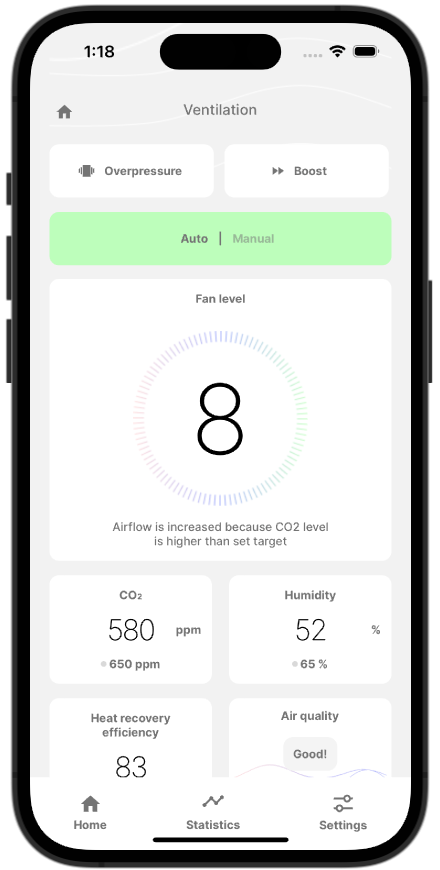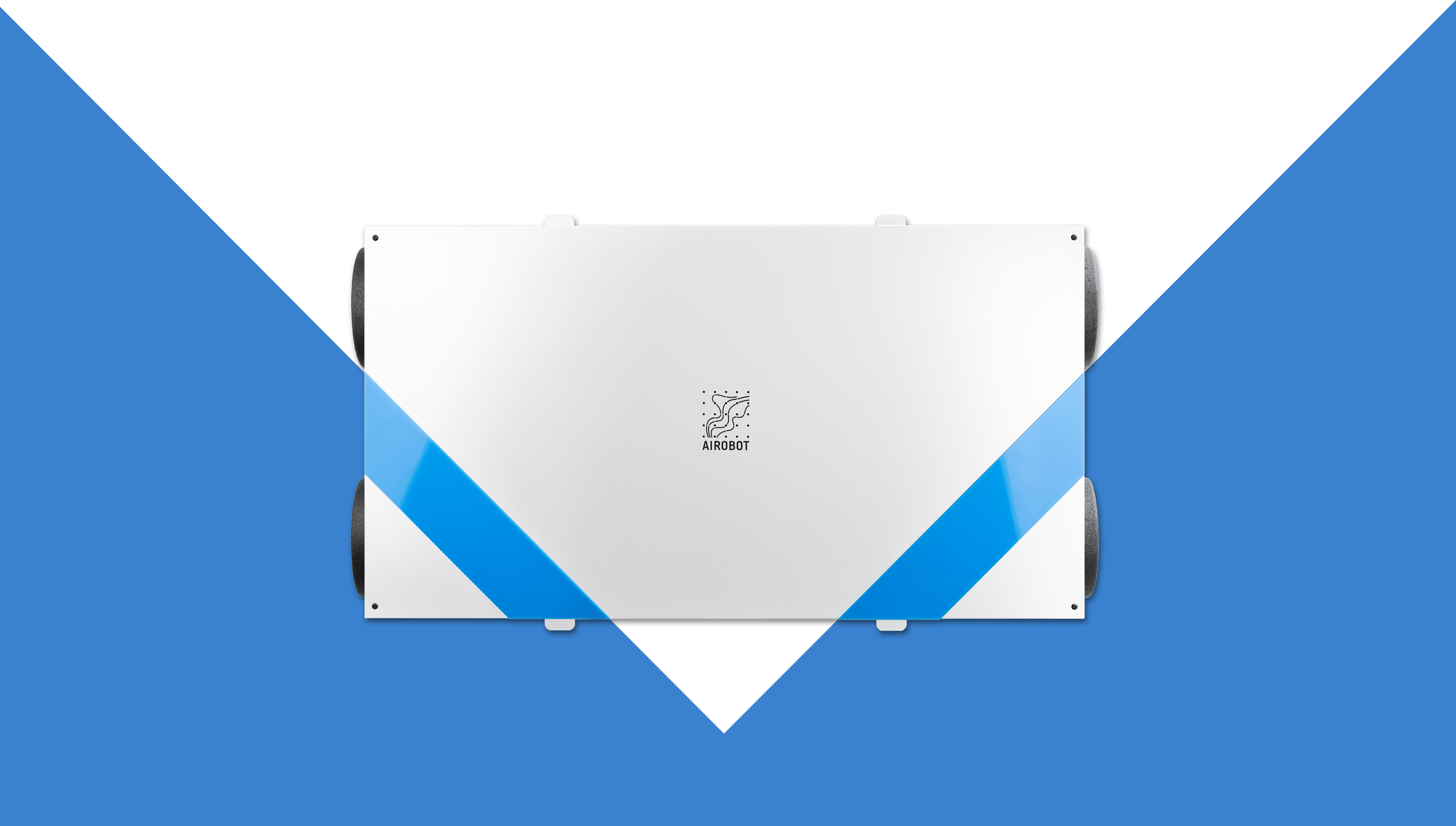Probably the
world’s smartest
heat recovery
ventilation unit
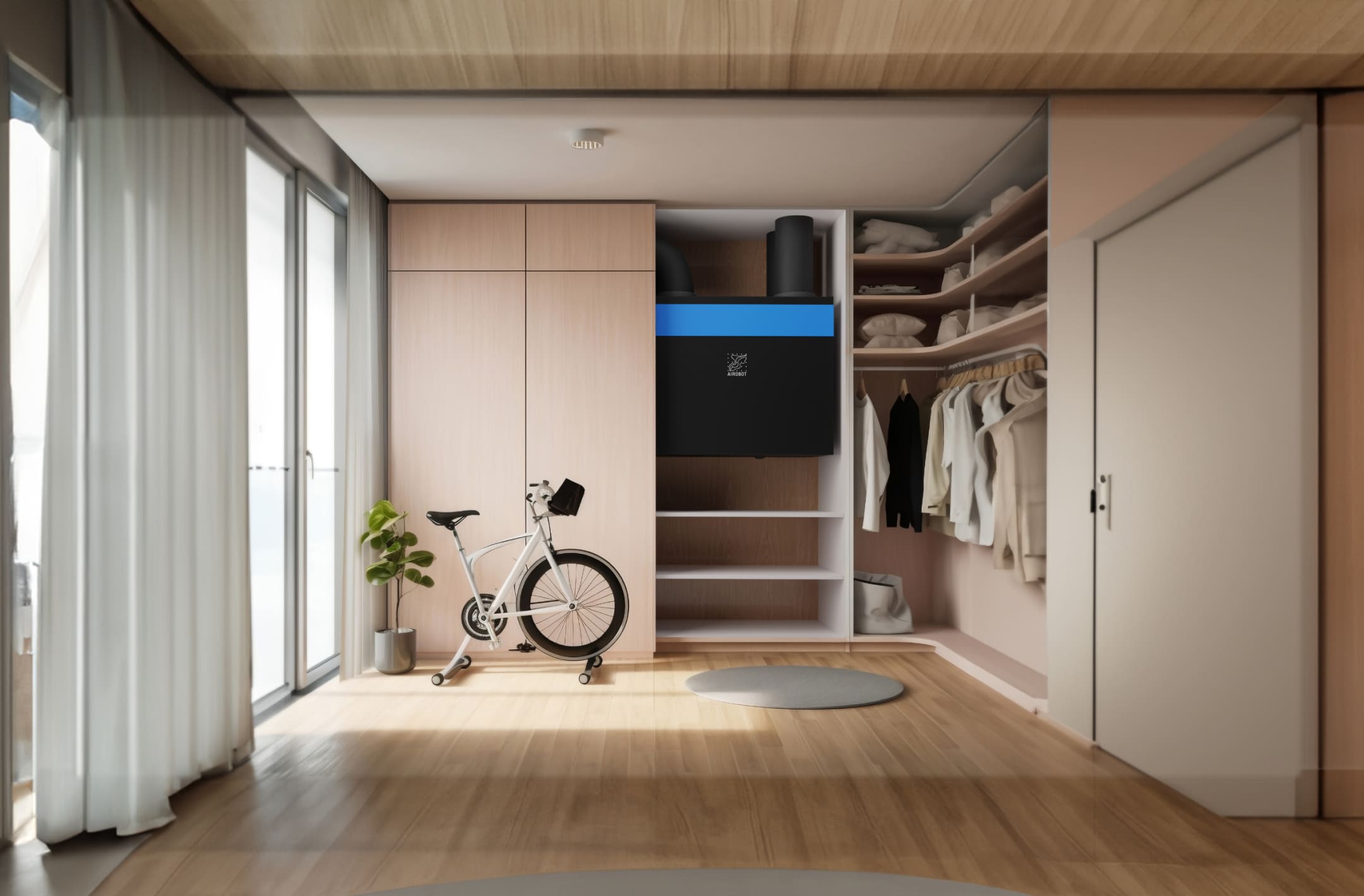
Airobot ventilation devices are equipped with CO2, humidity, VOC, PM and temperature sensors. This ventilation unit analyses the indoor air quality of your home in real time and improves it automatically.
Our devices are built to withstand harsh nordic climates. Airobot has heat and humidity recovery functions to keep you comfortable and work energy efficiently.
Airobot V8
WALL OR FLOOR MOUNTED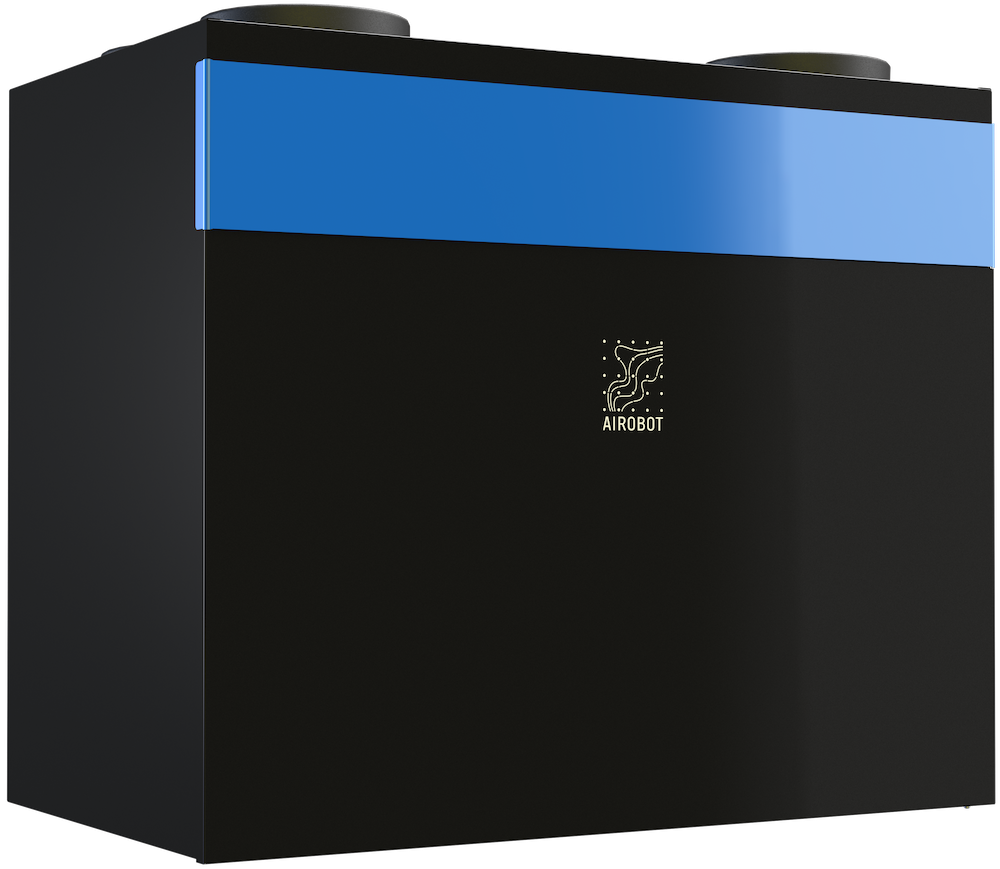
NEW! Ventilation unit with heat and humidity recovery
Airflow up to 750m3/h (208L/s) or up to 350m2 of floor space
Airobot V3
WALL-MOUNTED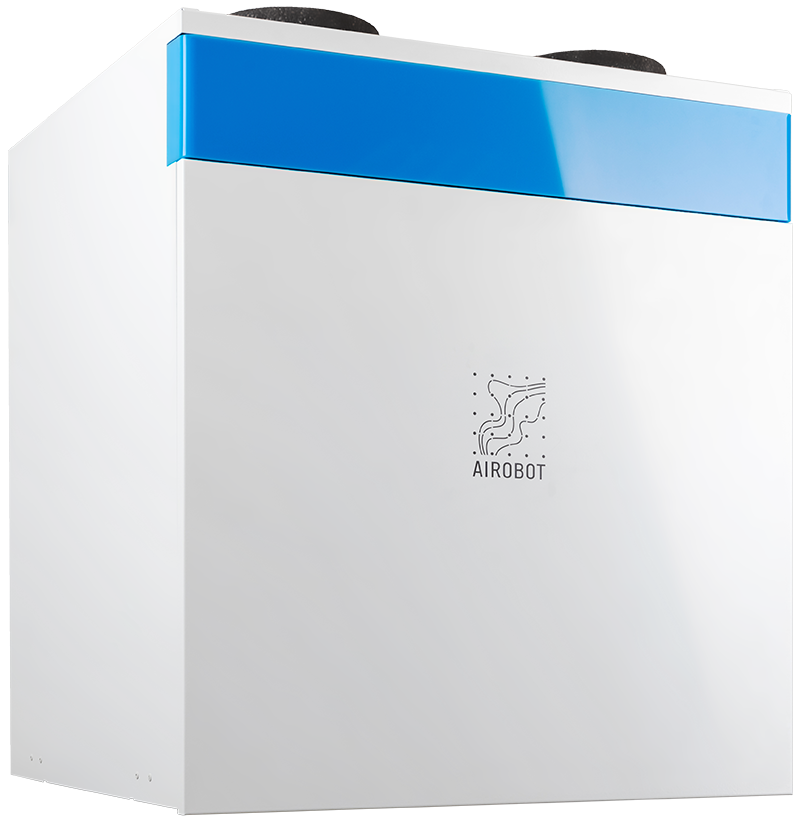
Ventilation unit with heat and humidity recovery
Airflow up to 309m3/h (86L/s) or up to 140m2 of floor space
Airobot S
WALL-MOUNTED
Ventilation unit with heat and humidity recovery
Airflow up to 500m3/h (139L/s) or up to 250m2 of floor space
Airobot L
CEILING MOUNTED
Ventilation unit with heat and humidity recovery
Airflow up to 250m3/h (70L/s) or up to 120m2 of floor space
Airobot L5
CEILING MOUNTED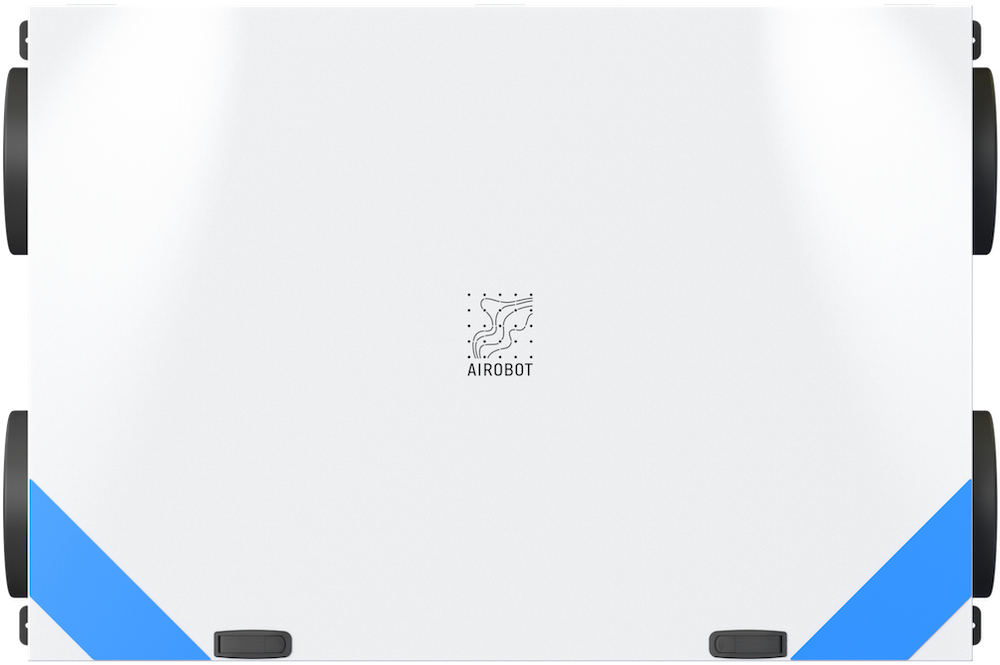
NEW! Ventilation unit with heat and humidity recovery
Airflow up to 500m3/h (139L/s) or up to 250m2 of floor space
A heat exchange ventilation system helps save you money!
All Airobot ventilation devices use heat-exchange. They use warm air, drawn from the house to heat the cold air, drawn from the outside.
Airobot ventilation devices uses a plate heat exchanger
✓ High heat recovery efficiency (up to 90%).
✓ Reduced air pollution – unlike a rotor heat exchanger, there is no mixing of air flows. The transmission of viruses and bacteria between rooms is prevented. Food and other odors are not returned indoors.
✓ High reliability – the plate heat exchanger has no moving parts and does not wear out.
✓ Easy maintenance – Simply run water through the plate heat exchanger every few years (for example, with a shower).
Read more: How heat- and energy recovery works
Humidity or energy recovery (ERV) function creates a comfortable indoor climate!
An ERV system can return up to 80% of the humidity generated in the home back into the living space. It can reduce dryness and discomfort during the winter heating season.
During more humid periods, the automatic control of the ventilation system will remove moisture from the home and prevent the humidity from building up
A humidity recovery heat exchanger is similar to a conventional heat exchanger, but the plates use a special innovative polymer membrane technology. This allows the humidity in the air to be transferred from the extract air back into the supply air. The material is antibacterial, which prevents germs from growing on the tile and entering the living space.
The ERV ventilation unit also has an automatic heat recovery function, thus helping to save heating energy.
Read more about humidity in the household
Packed with cutting-edge technology
The Airobot is equipped with several sensors that measure the indoor air quality in your home. The smart ventilation device automatically reacts to air pollution and changes the airflow as needed. In this way, Airobot ensures that the air in your home is always close to perfect
Airobot’s ventilation device detects changes in CO2, humidity, organic compounds, fine dust and temperature.
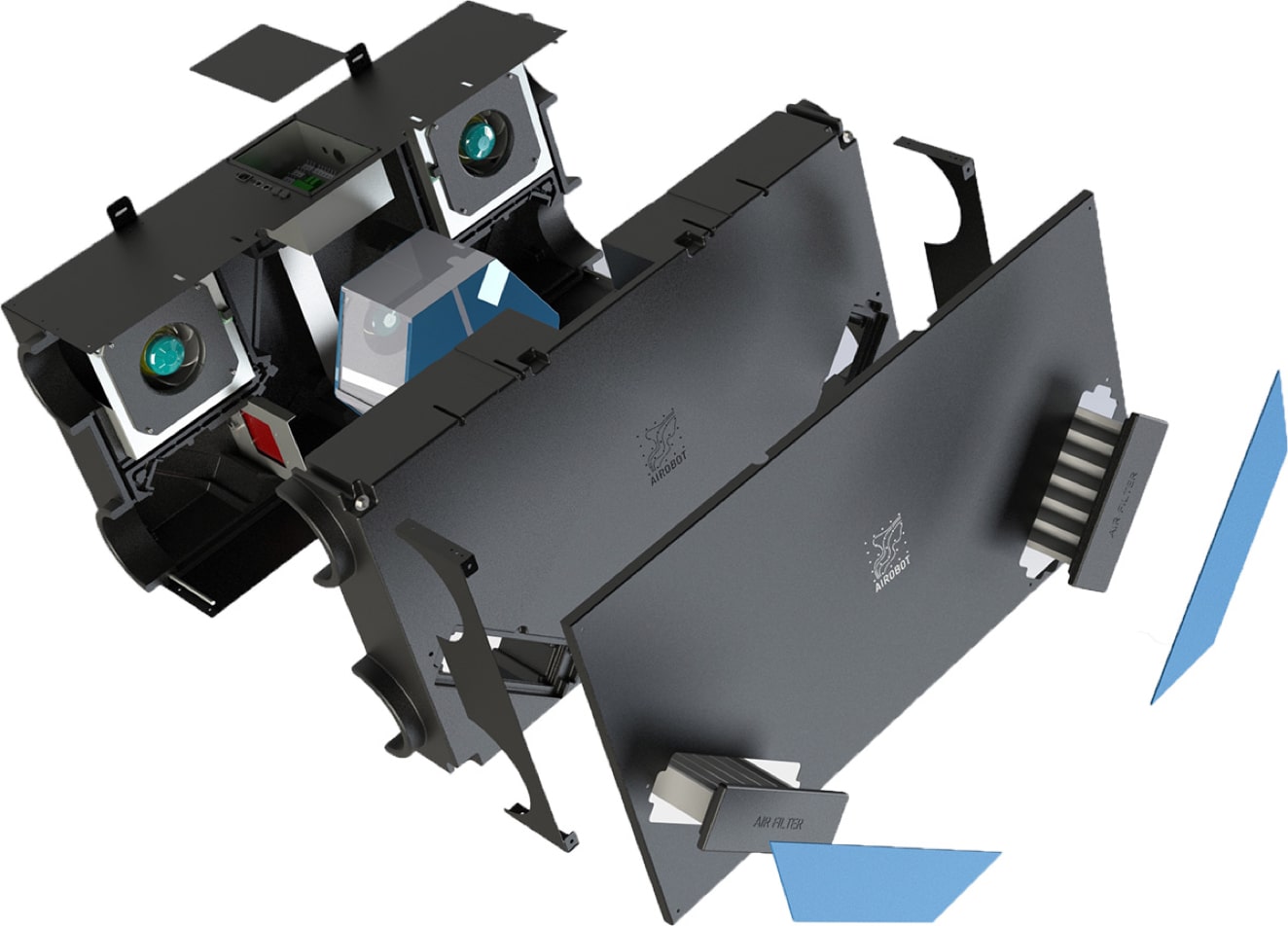
Heat- and
humidity recovery
Advanced material
technology
Uses 30%
less energy
Heat- and
humidity recovery
A humidity recovery (enthalpy) heat exchanger is available as an option and transforms the system into an energy recovery ventilation (ERV) system. A humidity recovery heat exchanger recovers both heat (up to 90% efficiency) and water vapour (up to 80% efficiency).
Advanced material
technology
Airobot V3 and L models are made of non-corrodible EPP. This ensures a long service life for these units. EPP is used in many other products, for example in bicycle helmets.
Uses 30%
less energy
With its many sensors, Airobot can tell when rooms are unoccupied and switches to minimum power. For example, in rooms that remain unoccupied for 8 hours a day on average, Airobot uses up to 30% less electricity compared to conventional ventilation, with additional savings on heating.
ALL THIS THANKS TO:
- Autonomous demand-based control algorithms
- Efficient EC (0-100% speed) motors.
- Industry-leading heat exchanger, which enables up to 96% heat recovery.
- Intelligent 0-100% PTC thermistor-based frost protection
- Novel materials.
Ventilation unit that measures and improves home air quality
Carbon
dioxideCO2
Particulate matter
(PM)
Volatile organic
compounds VOC
Temperature
and humidity
Carbon
dioxideCO2
Carbon dioxide (CO2) levels are a primary indicator of indoor air quality. Indoors, the main sources of CO2 are people and combustive processes. The CO2 percentage in outdoor air is 0,03-0,04%, but this rises to approximately 4% after being breathed in and out – a 100-fold increase that contributes to higher CO2 levels indoors.
Studies have shown that the level of CO2 has a major effect on human well-being. It influences your sleep quality, whether you feel rested in the morning and your energy levels throughout the day. A high CO2 level reduces concentration and increases fatigue, resulting in lower productivity. Furthermore, CO2 levels have been shown to affect virus transmission.
The amount of CO2 in the air is measured in ppm (parts per million). This stands for the number of CO2molecules per million total air molecules. The CO2 level in the air may be estimated on the following scale: green (good) is between 400-800 ppm, yellow (normal) is between 1000-1600 ppm; red (bad) is over 1600 ppm. Higher CO2 levels are considered unhealthy for humans.
Particulate matter
(PM)
Particulate matter (PM) refers to all liquid and solid particles that remain suspended in the air for extended periods. For air quality monitoring, particulate matter is classified based on diameter. Smaller particles remain suspended for longer and may penetrate deeper into human airways. Those with a diameter of 10 microns or less (PM10) pass through the nose and pharynx and reach the lungs. PM2.5 reach the lung alveoli, and even smaller particles (PM0.1) may penetrate the circulatory system.
The health effects of PM are largely determined by its chemistry. One of the main causative agents of PM-related health issues is thought to be heavy metals, such as iron, nickel, zinc and copper. The mildest symptoms of air pollution include chest discomfort, coughing and sneezing. PM10 and PM2.5 are thought to cause heart and lung disease, lung cancer, asthma attacks and many other health disorders.
Indoor PM levels are influenced by several factors, including outdoor air quality, the type of ventilation and filtration system used, any indoor furnaces/fireplaces, and human activity indoors.
The PM sensor is available as an option. See here
Volatile organic
compounds VOC
Volatile organic compounds (VOC) are a major component of indoor and outdoor air pollution. VOC are emitted from various sources, such as construction materials and furnishings, chemicals used in personal items, cleaning products, paint, dust and fumes. A high VOC level is common in new or freshly remodelled buildings. VOC have direct health effects, causing dryness and irritation of the eyes, nose and throat, dizziness and headaches.
The Airobot ventilation unit incorporates a VOC sensor and an algorithm that analyses detected VOC events and calculates the VOC index. The volatile organic compounds index is a valuable indicator of indoor air quality. It is meant to reflect both those VOC events you can smell and those you can’t.
Temperature
and humidity
Humidity is a critical indicator of indoor air quality. Long-term, 40-60% humidity is optimal for our immune and respiratory systems. It curbs the spread of seasonal respiratory diseases and helps us feel well.
Excessively high or low humidity promotes the spread of bacteria and viruses that cause respiratory infections. Mould spores, dust mites and other allergens thrive in high-humidity environments. Furthermore, humid air may harbour harmful chemicals, including ozone and formaldehyde.
In the summer, when excess humidity presents problems, the Airobot unit with humidity recovery stops humidity from getting inside. In the winter, when the outside air gets dry, the Airobot humidity recovery system helps humidify the indoor air, keeping it comfortable. While a conventional heat exchanger removes all condensed humidity, our humidity recovery system re-introduces part of it to the indoor air. This is especially relevant in the cold Northern climate, where indoor air can get uncomfortably dry during the heating season.
Accessories for Airobot ventilation units
CENTRAL HUMIDIFIER
Whole house humidification through ventilation system
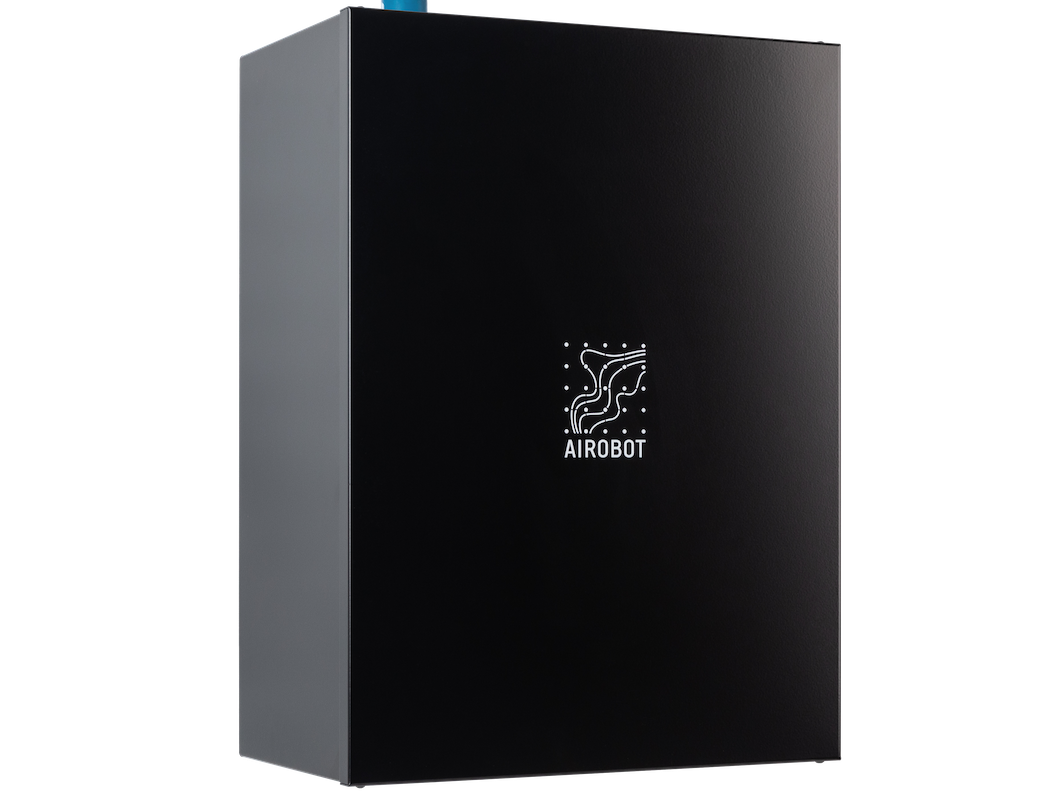
PREHEATING AND -COOLING CALORIFIER
Ground-source based preheater and -cooler
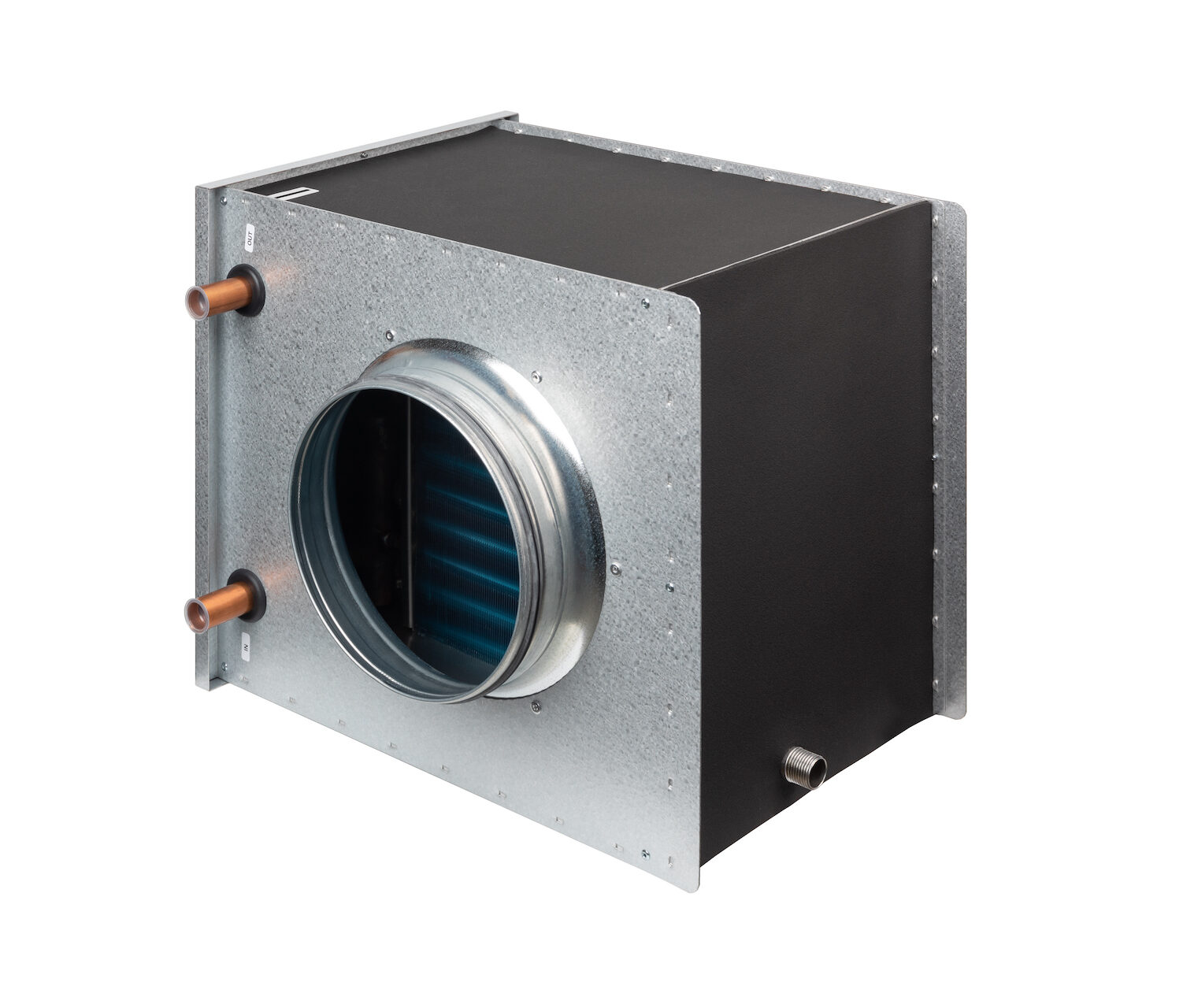
FAQ
Ventilation-En
Yes, Airobot works without an internet connection. However, in such cases, we recommend purchasing a remote control for device management.
Connecting Airobot to the internet ensures that you enjoy continuous software updates, advanced air quality monitoring, faster remote troubleshooting, and an extended warranty.
Yes. Our devices can also be controlled through the Airobot mobile application. To do this, you need to connect the device to the internet.
The expected lifespan of an Airobot ventilation device is 15-20 years.
We recommend changing the ventilation device filters at least once every six months. If you live in a residential area with many wood-burning houses, we recommend changing the filters more frequently.
The Airobot application will notify you when it’s time to change the filters. New filters can be conveniently ordered from our online store.
Airobot devices are designed and built to be very durable. We’ve rigorously tested the devices in harsh conditions and are confident in their quality. Nevertheless, these are machines that operate 24/7 to ensure clean air. To be honest, on very rare occasions, there may be engine or hardware failures in Airobot devices.
If this happens, we respond very quickly and with full seriousness. We always keep a small amount of spare parts in stock and organize repairs very quickly.
The ventilation device can only return the moisture that is in the indoor air. It can’t take it from outside. During the heating period, the humidity level in some homes drops very low, and then there is nothing for the moisture exchanger to return. In this case, we recommend integrating Airobot’s central humidifier.
Ventilation system that is built for the rough Nordic climate
Airobot is designed for the cold winters and hot summers in Northern Europe. In summer, when the indoor air gets hotter than the outdoor air, the unit autonomously opens a bypass valve to start cooling. Meanwhile, the humidity recovery option keeps excess humidity out.
In colder weather, fresh air is drawn in through a heat exchanger, where it recovers heat from the exhaust air. As a result, the outdoor air needs no additional heating and is blown indoors at close to room temperature.
In the winter, the device helps maintain a comfortable humidity level indoors. While a conventional heat exchanger removes all condensed humidity, our humidity recovery system re-introduces some of it to the indoor air. This is especially relevant in the cold Northern climate, where indoor air can get uncomfortably dry during the heating season.
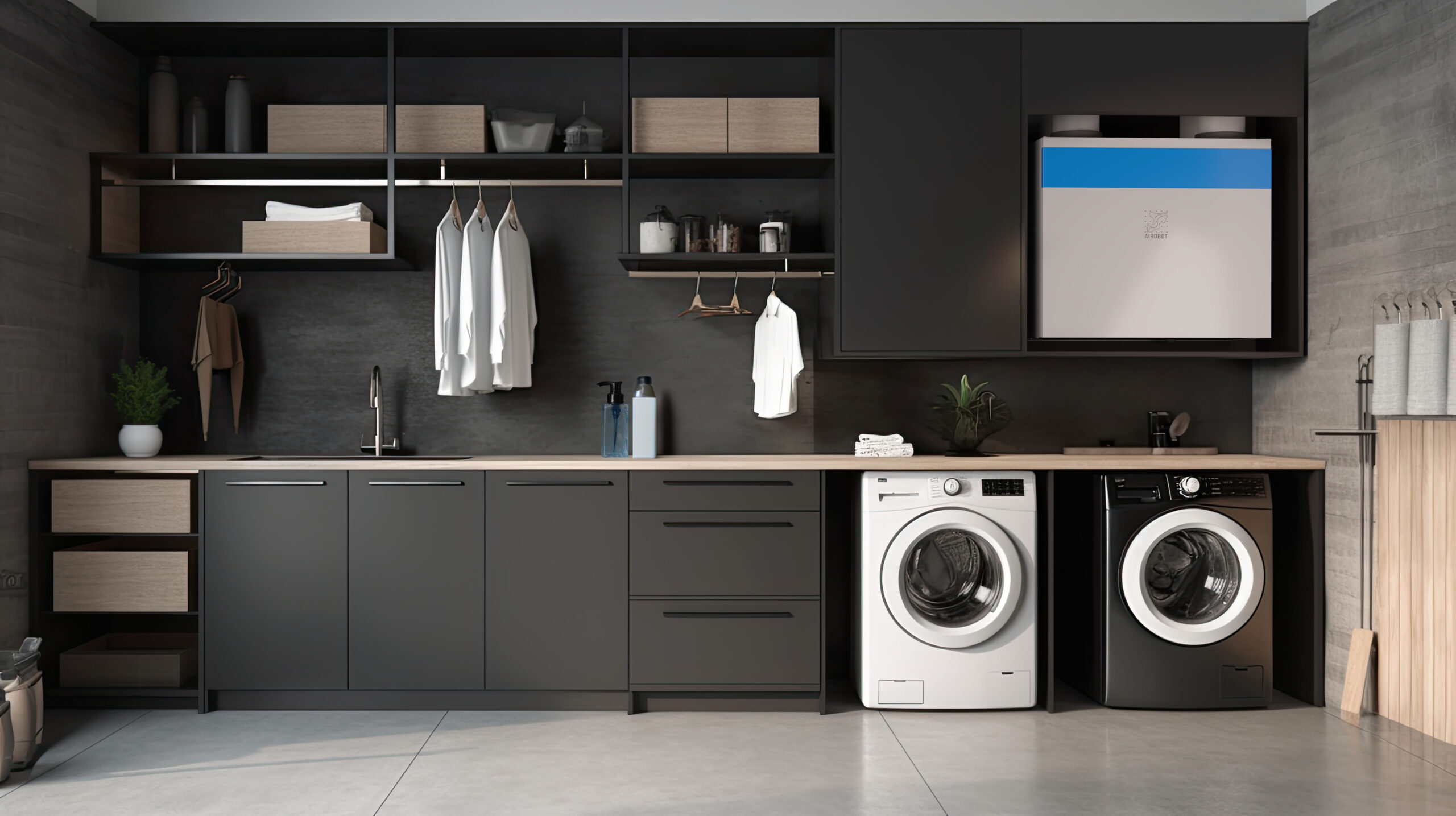
Unlike other ventilation systems, the Airobot units use automatic balancing for efficiency. The unit’s resistance to airflow changes over time (due to dirtied filters, water, etc.), which necessitates constant adjustment of relative motor speeds. This ensures a constant comfortable air supply temperature and even greater cost savings.
During winter, a ventilation system’s heat exchanger can freeze. Therefore, ventilation systems sold in frost-prone areas need to include frost protection.
The Airobot has novel PTC thermistor-based heating elements which can be incrementally controlled between 0-100% and is shaped for minimal air resistance. This ensures balanced ventilation all year round – crucial for today’s well-insulated homes. Incrementally controllable frost protection is a recent technical advancement that provides even more energy savings when compared to conventional ventilation solutions.
In freezing temperatures, the device calculates a freezing limit based on indoor humidity and air temperature. The outdoor air is preheated to stop the heat exchanger from freezing. This also ensures suitable air supply temperature, regardless of the outdoor temperature, and requires no additional heating thanks to the high efficiency of the plate-type heat exchangers.
